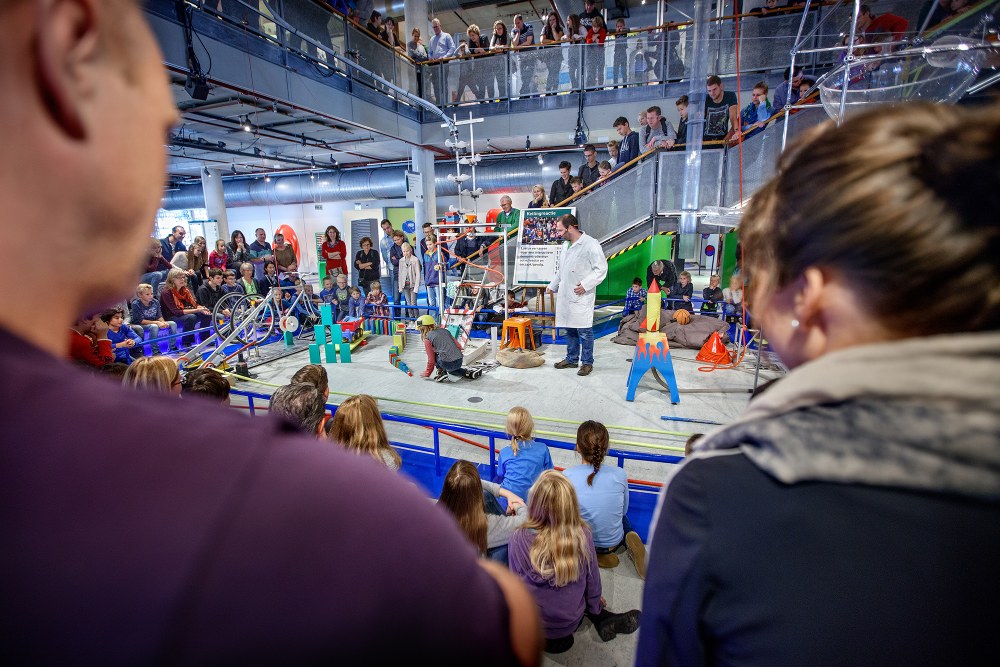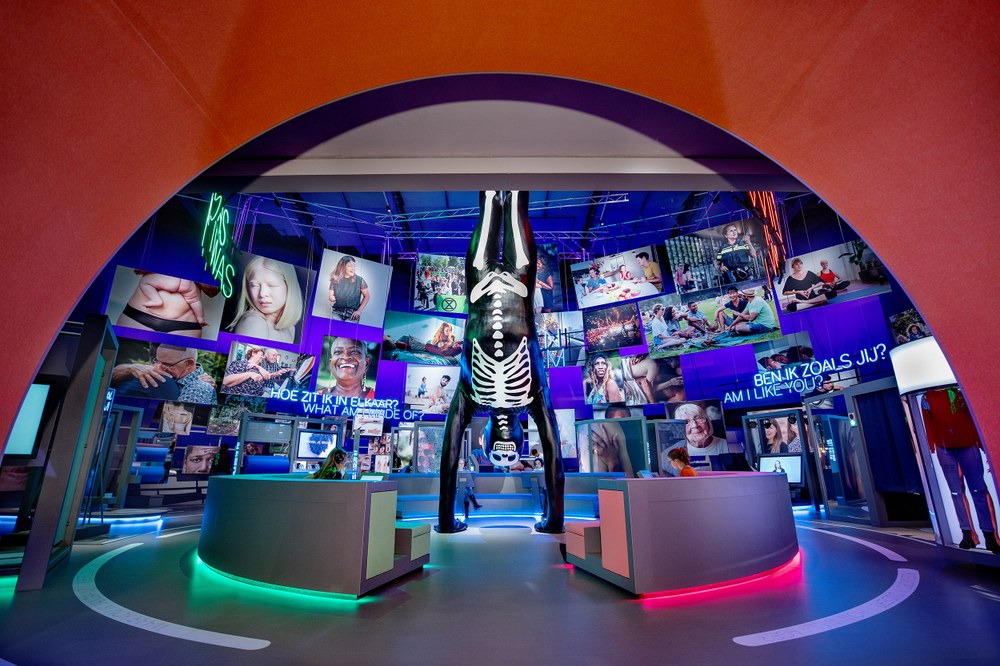Science at your fingertips in Amsterdam

NEMO Science Museum/DigiDaan
A large, turquoise-green building with a curved structure that gives the impression of a ship's hull emerges from the water in the Oosterdok in Amsterdam. The NEMO Science Museum boasts an unmistakable architectural style that casts a spell from afar. Inside, visitors can experience science up close.
Designed by the Italian architect Renzo Piano, the building, which was built in 1997, features a distinctive and innovative architectural style. The use of copper for the exterior not only adds a unique colour but also allows the building to oxidise over time, harmonising with the surrounding environment. NEMO has its roots in the Labour Museum, founded in 1923 by painter Herman Heijenbrock, who wanted to share his collection of paintings and objects, and his enthusiasm for technology. The museum's history is closely intertwined with the development of science and technology in the Netherlands, evolving over the last 100 years.
Today, the NEMO Science Museum is a modern institution that presents science and technology in a relaxed, interactive and accessible environment. The museum boasts around 20,000 artefacts categorised into four core collections: Lighting, Electrical Engineering, Energy Generation and Storage and Technology at Home.
The 'Fenomena' exhibition on the first floor immerses you into the NEMO universe. Many interactive exhibits await visitors here: a plasma ball that can be used to generate sparks, a variety of colour filters that can be used to create impressive photographic effects, and much more.
Unstoppable once set in motion

NEMO Science Museum/DigiDaan
A crowd has gathered at the museum's internal balcony. Visitors are eagerly waiting for the 'Chain Reaction' show to begin. A number of objects are lined up: a toy truck, dominoes, a rocket ... and the countdown begins. The truck slides down a ramp, knocking down dominoes that have been lined up in advance. The dominoes fall – one by one – eventually colliding with a bigger toy truck which hits another domino and … the chain reaction has begun. From that moment, there is a flurry of activity: water falls down a 'cascade' of water bottles. As it seeps through the bottom of the cascade, something seems to start moving through the air. 'Is it a plane, is it a bird …?' The object flies across the exhibition area, initiating yet another mechanism composed of spheres and a spiral slide. The visitors' eyes are glued to the 15-minute demonstration, not wanting to miss any of the unexpected reactions. But if they do, they can always watch the next one, as there are several showings a day.
At NEMO, science permeates all areas – be it on information boards, on the flooring or in the seating areas: a label on the armrest of a chair provides information about the fact that thousands of pieces of space debris are in Earth orbit. Even as visitors use the staircase, a white and blue sign informs them that taking a single step requires the use of up to 200 muscles. On to the third floor, guests step into an exhibition about the building blocks of the cosmos.
Unveiling the Universe
In 'Elementa', visitors come across an extraterrestrial artefact: a 4.6 billion-year-old meteorite from Nantan, China, consisting largely of iron. This ancient space rock is a relic from bygone times. Visitors can witness and even touch this particular specimen. The sign above eloquently declares 'it is probably the oldest thing that you will ever touch!'. On this floor, visitors can transition from meteorites found on Earth to exploring the Universe through videos and interactive activities. Space trivia and extraterrestrial life are just two of the numerous topics covered here. The exhibit includes historical telescopes and features an interactive game projected onto a wall, providing an opportunity to defend Earth from all sorts of space hazards. Visitors can even embark on an imaginative journey through space, even choosing a pet or human companion to accompany them.

NEMO Science Museum/DigiDaan
Who are you?
Following 'Elementa' is 'Humania' on the fourth floor. A tunnel leads to a colossal 8.5-metre sculpture by Dutch artist Florentijn Hofman – a human figure standing on its hands in a skeleton suit. As visitors interact with this impressive sculpture, it encourages reflection not just on their individual existence but also on the cosmic influences shaping humankind.
A panel at the entrance asks, "Who are you? Who were you?", inviting visitors to explore their origins, identity, aging process, as well as the influences shaping them. Humania provides insights into the multifaceted human experience that stimulate curiosity in health, memory, and happiness. The exhibition segments delve into themes of the human experience, exploring diverse cultural perspectives on death and pushing the boundaries of our body's movements.
On top of Amsterdam
NEMO's rooftop is home to 'Energetica', an open-air exhibition with a variety of interactive sculptures and installations. They bring the topic of renewable energy to life. A water cascade offers a water play area suitable for children, a rainbow machine illustrates the interplay of light and water, and 12 fountains are installed on the roof, which are powered by various devices such as a wind turbine on the 'wind island'. Here, visitors can test their strength against the elements. On the 'solar island', they can relax on chairs equipped with solar cells that produce energy in the sunlight. But of course one can also simply enjoy the view.
Whether intrigued by meteorites or energised by renewable sources, a visit to NEMO is an intense experience that will leave you in awe. In July of this year, the 'Technium', NEMO's newest exhibition area, will open after six months of renovation work. Here, everything will revolve around engineering and technology – a fitting occasion for a visit to this futuristic 'ship' in the heart of Amsterdam.

NEMO Science Museum/DigiDaan
An article by Claudia Sciarma from the DLRmagazine 175
